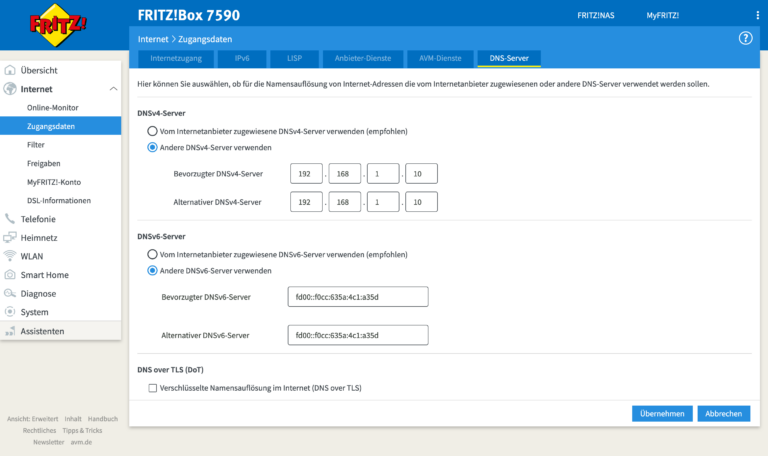
- #ADGUARD DNS SERVERS INSTALL#
- #ADGUARD DNS SERVERS SOFTWARE#
- #ADGUARD DNS SERVERS CODE#
- #ADGUARD DNS SERVERS PASSWORD#
In order to test the speed of the resolver, I used a small script created by CleanBrowsing and shared on GitHub. AdGuard Home also has an option to use a public or private allowlist. Inevitably with DNS blocking, some false positives will occur – but both offer an easy way to add individual domains to the allowlist that you wish to access. It would seem likely that the almost 20,000 extra domains in the Pi-hole list will improve it’s blocking performance out of the box. In both cases you can add any other listings of your choice – AdGuard has a tick box to add the ‘AdAway’ list, for instance. Both have the option to add another list from but this appears to be defunct. AdGuard Home blocks 39.928 from their own (but also public) database. Pi-hole DNS server selectionĪdGuard Home DNS server selection Blocklists/Allowlistsīy default, Pi-hole blocks 58,866 domains from a single public database. Interestingly, the AdGuard Home default is over https rather than conventional DNS, which is more secure.īoth can be configured to use any DNS resolver you wish – though AdGuard Home also offers the ability to use DNS-over-TLS and DNS-over-HTTPS for the upstream. Pi-hole defaults to Google’s DNS servers, whilst AdGuard Home defaults to Quad9. Upstream DNSįor DNS queries that aren’t blocked or cached, both of these utilities will query an upstream DNS server to get the answer for you. This also enabled some additional features which may be useful to you. Again this is fairly easy by following their instructions here.

#ADGUARD DNS SERVERS INSTALL#
There’s a straightforward guide to achieving it with Caddy here.įor AdGuard Home, the recommended method is to install CertBot and use DNS verification. Pi-hole seems the easiest option here, as it’s only used to encrypt the management interface (more on that later).
#ADGUARD DNS SERVERS SOFTWARE#
Installing a free LetsEncrypt certificate to either piece of software requires a little more command-line work – though neither is particularly difficult.

DNS traffic is very light, so even under a heavy load from several users, this wouldn’t stress a small server. Disk space is equally light – 1.7GB for AdGuard Home and 1.8GB for Pi-hole – both including a CentOS 7 install. AdGuard Home is showing just 130MB of memory used, and Pi-hole just a tiny bit more at 138MB. Resource Usageīoth are very resource-light and would happily run on a small VPS to share with friends and family. I would say that the AdGuard Home screen looks a little more modern but both are logical and clear. When you first log in to both services, they are relatively similar – offering details of how many DNS queries have been answered, how many blocked, most common domains and details of the clients. You’re then presented with a quick setup where you choose your username/password and determine what interfaces the server will listen on. The installer just downloads a compressed file, extracts it, and sets it up as a service – the whole time was just 4s! You’re provided with a link to access the interface.
#ADGUARD DNS SERVERS PASSWORD#
At the end, you’re provided with a link and password to log in. It’s good that these come from trusted and frequently updated sources to help keep your server secure. The installer first adds the EPEL and Remi repos to gain access to additional software. Equally, both offer single-line install scripts to do the hard work for you.Īnd for AdGuard Home it’s: curl -sSL | shįirst, Pi-hole. Installationīoth Pi-hole and Adguard Home can be installed from source, which is certainly to be recommended if you’re particularly concerned about privacy and security.

I’ve used CentOS 7, fully updated and freshly rebooted to ensure they were clean and ready to go. I then went ahead and ran some of my standard performance checks to be sure and found the scores to be well matched. I’m fairly sure they are both on the same physical host, so subject to the same neighbours and are of identical specification – 1GB RAM, 2 AMD EPYC CPU cores and a 15GB SSD disk. To this end, I chose a smaller provider, VMHaus. In order to test these side-by-side, I wanted two identical cloud servers. Pi-hole is released under the EUPL v1.2 and Adguard Home under GPL v3.
#ADGUARD DNS SERVERS CODE#
Source code for both pieces of software is available on Github for anyone wanting to look at it. This is your own decision to make and I’m just reviewing the options available to you. Many websites rely on payments from advertisers to remain online (including this one). Of course, there’s a lot of argument about the morality of blocking advertisements. If you set this as the DNS server for your whole network, it’s a very efficient way to ensure every device makes use of them. You set your devices to use them as a DNS server, and they filter out domains serving ads or trackers. Both Pi-hole and AdGuard Home are network-level ad and tracker blocking software.


 0 kommentar(er)
0 kommentar(er)
